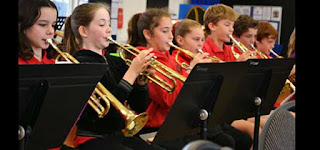"How children learn and what they learn through art is largely influenced by the values of their surrounding culture: families, teachers and the local community" (Brown and Watkins, 2012, p. 111).
 |
| Visual art display at my son's preschool - spiders, caterpillars and butterflies! |
 |
| My son's memories of his visit to the National Museum of Australia. |
Research has highlighted that children feel a deep connection with their
artwork, through the experience of creating it and the personal investment they
made towards it. This connection is also linked to displaying the art. By
treating the practice of displaying student’s artwork with less sensitivity
(including consultation about whether or not a student wants to display their
artwork) than the practice of making art, diminishes the emotional investment made
by the student. Research shows that as adults we underestimate the significance
of art experiences and the direct impact they have on young children, and we
should be more sensitive about the entire art experience including displaying
their artwork (Boone, 2008, p. 22- 40).
Displaying my children's artwork at home is something I have always
done, albeit quite selectively and usually without much consultation. Here is
what our family room looks like:
 |
| A selection of my kids art displayed at home. |
 |
| More art on display at home. |
Visual literacy (being able to read, understand and create visual texts)
is a crucial skill in our increasingly complex visual, digital world, and
picture books are a simple and effective way of cultivating such skills (Brown
and Watkins, 2012, p. 123). Analysing illustrations in picture books
using Bloom's Taxomony is a fantastic visual
literacy resource for students of all ages. The following links provide some
useful ideas for how to integrate picture books in to the curriculum:
- Ways of viewing and teaching picture books: Every picture tells a story
- Visual literacy through childrens picture books
References:
Boone, D. (2008). Young children's experience of visual displays of their artwork. Australian Art Education, 31(2), 22-45.
Brown, R., Macintyre, P. & Watkins, M. (2012). Learning in and through the visual arts. In C. Sinclair, N. Jeannert & J. O'Toole (Eds), Education in the arts. Melbourne, VIC: Oxford University Press.


















